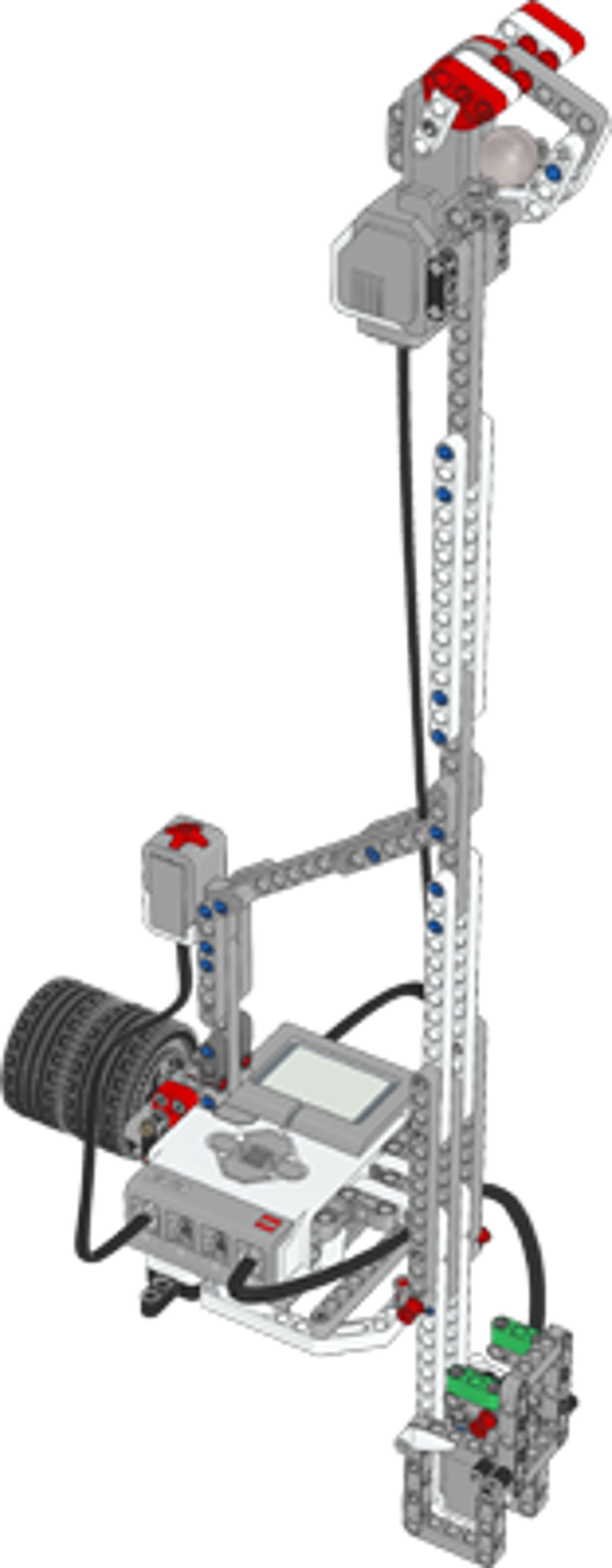Acceleration of Gravity
Introduction
Free fall describes a state in which objects like rocks, coins, or falling fruit fall to earth, due to gravity.
Interesting considerations here include:
the distance traveled by an object in free fall,
for how long an object falls before it hits the ground,
the velocity at which an object falls, and
how quickly an object accelerates.
The following experiment involves the construction of a drop tower equipped with suitable sensors for observing gravitational phenomena affecting a steel ball in free fall.

Connect
Explain why it is hazardous to sit under a tree full of ripe apples.
Explain why a person jumping out of an airplane at a great height needs a parachute.
List everyday occurrences in which gravity plays a role.
Connect
Building Instructions

Download Program “10”

Notes on Using the Model
The Touch Sensor is mounted to the back of the drop tower. It is used to trigger a drop experiment.
The Grasping Gripper closes automatically for the next experiment.
The Display on the EV3 Brick shows the fall time.
• Ensure that the model has been built correctly.
• Place the model properly on a solid and level surface.
• Ensure that the tower is not shaking when releasing the ball.
The Touch Sensor can also be held and used as a manual remote control if needed. This allows you to avoid shaking the tower, which might lead to invalid tests.

Contemplate
Experiment – Measure
- Start Program “10”
- Place the ball in the closed Grasping Gripper.
- Start a test using the free Touch Sensor on the drop tower.
This is what happens:
The ball drops down onto the Touch Sensor at the bottom of the drop tower.
The fall time is indicated on the display.
The Grasping Gripper closes, and now you can repeat the experiment.
Invalid tests result in a Grumpy Face.
Perform the experiment at least three times.
Record the experiment numbers and fall times in the table. Expand the table if needed.
Continue
Analyze
You know the drop distance d and fall times t.
- Using the measured fall times, calculate the average velocity v of the falling ball.
- Enter the results in the table.
As a reminder: v = d/t.
According to the law of falling bodies: d = 0.5 * g * t².
g is a natural constant denoting gravitational acceleration. - Solve the equation of the law of falling bodies for g.
- Calculate the acceleration of gravity (g) based on the measured values from your experiments.
- Enter the calculated values for g in the table.
What Did We Measure and What Did We Find Out?
Briefly summarize the results of your experiment.
Review
Briefly summarize the results of your experiment. Report on what you learned.
- Background and question (topic)
- Answers (make connections)
- Conclusions
- How it ties into everyday life (where do we see or use what we observed in everyday life?)
